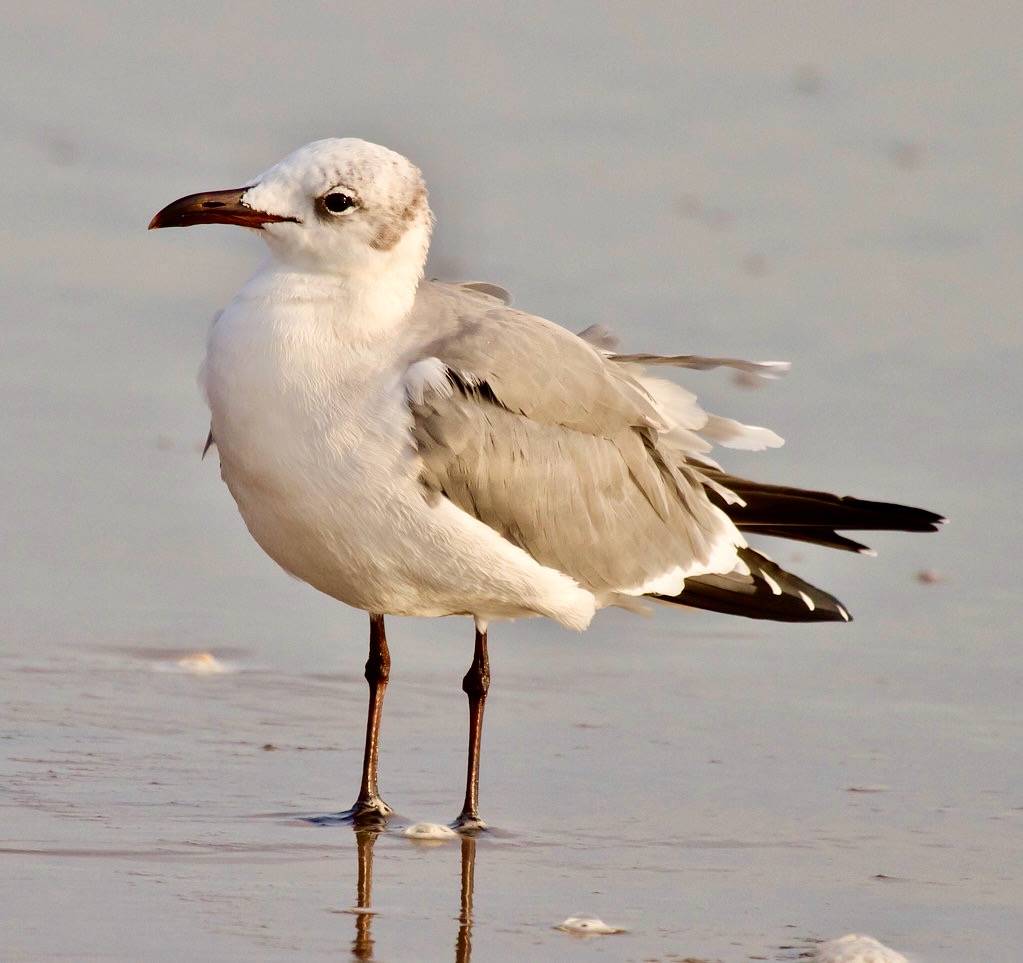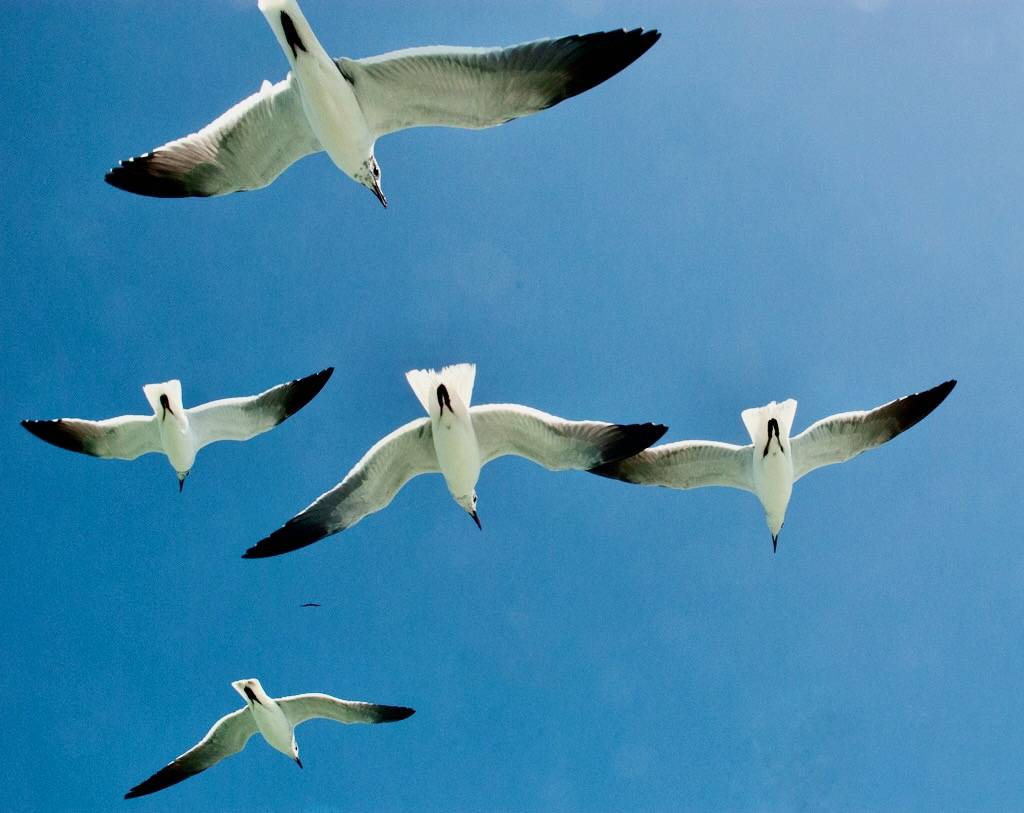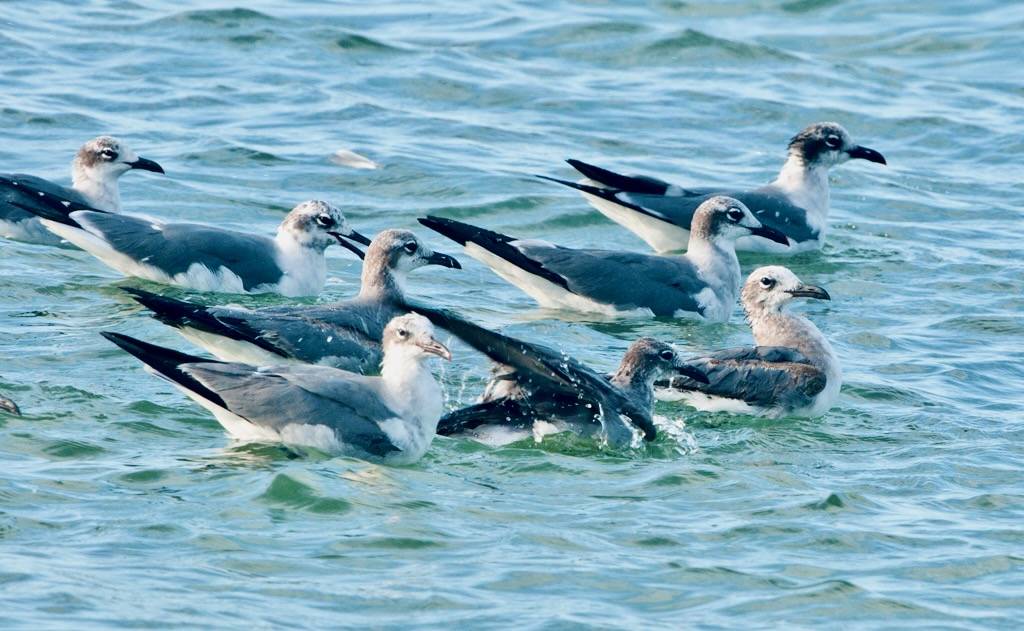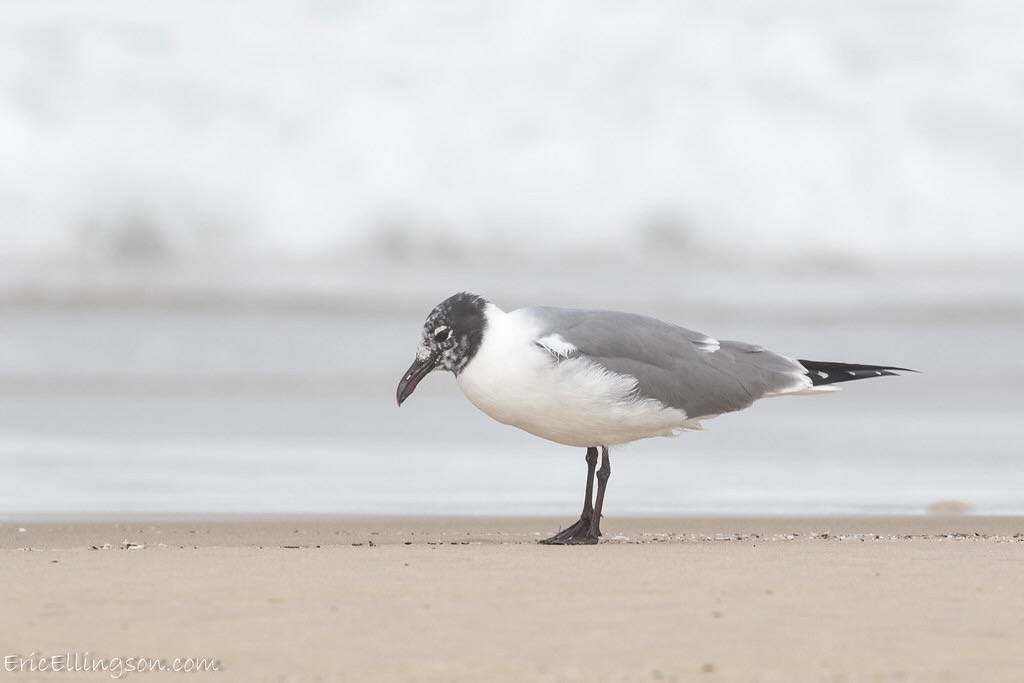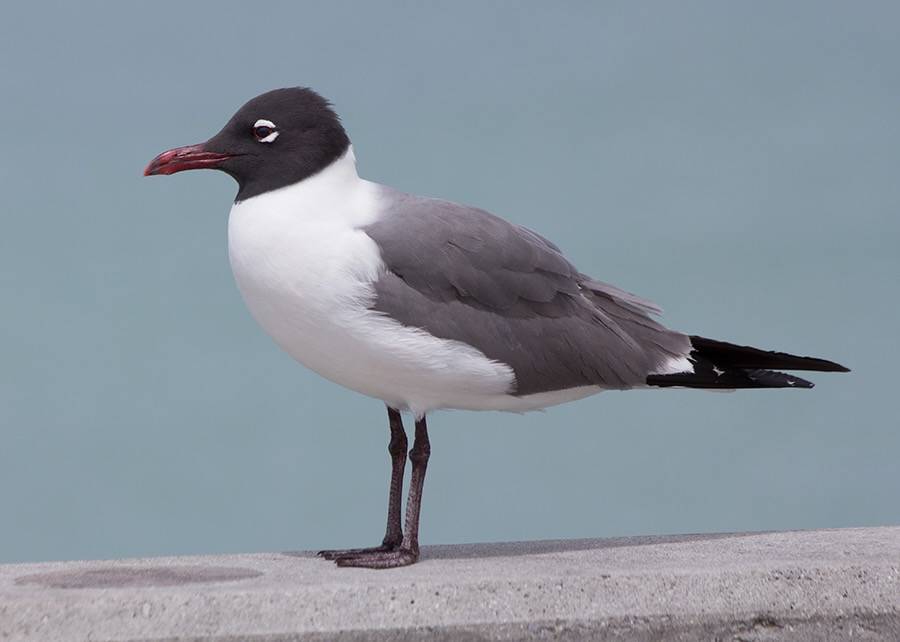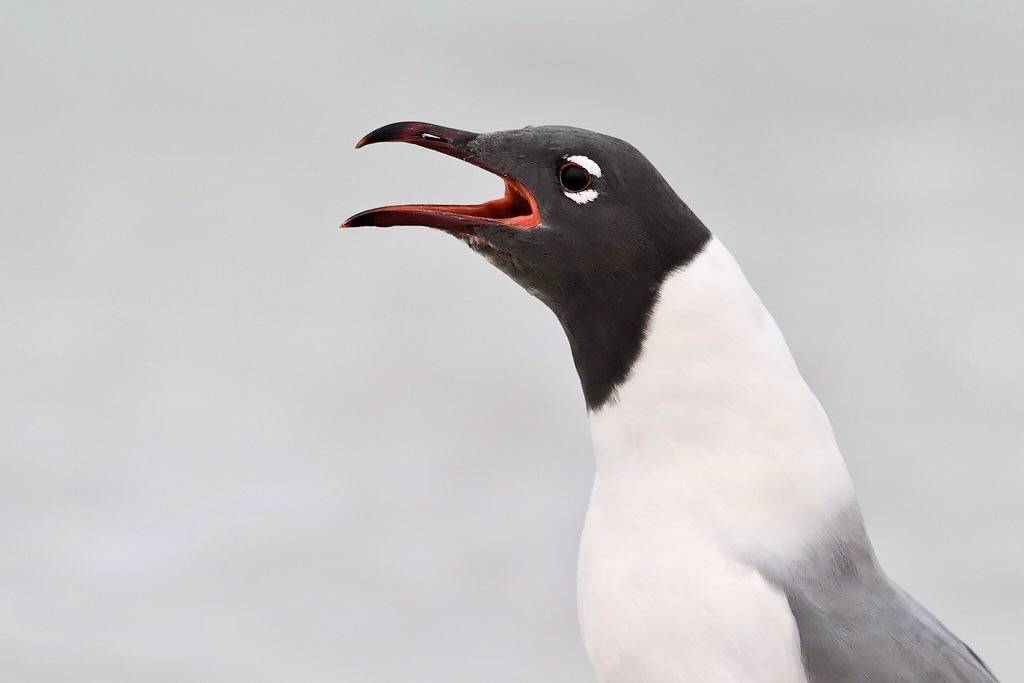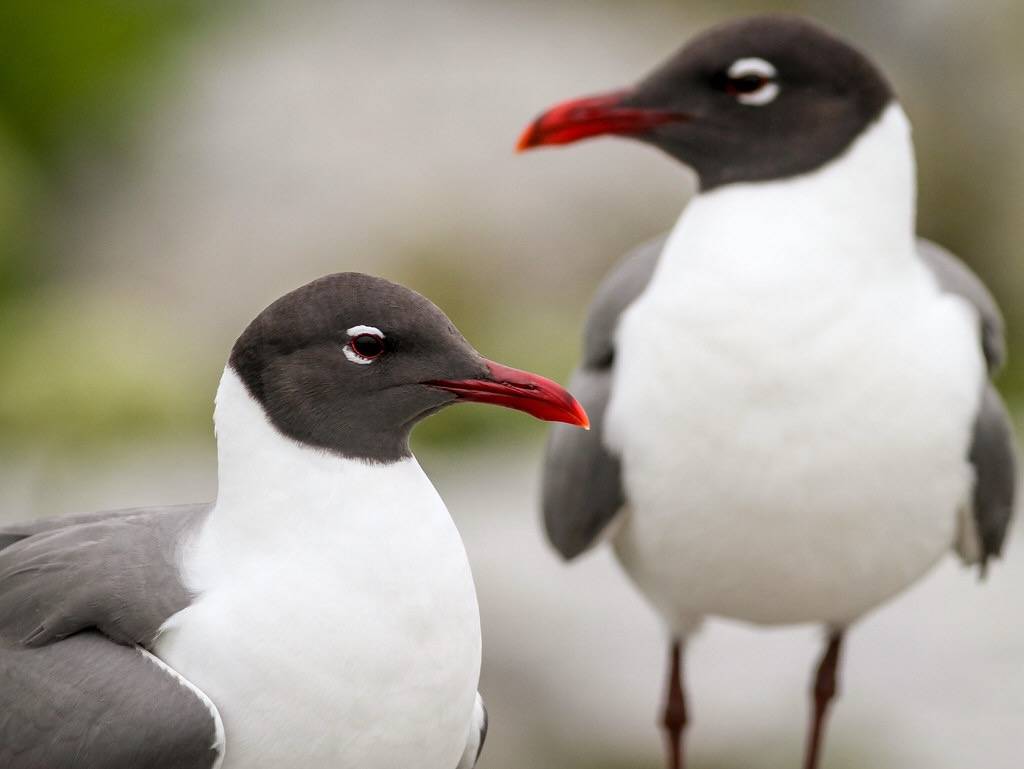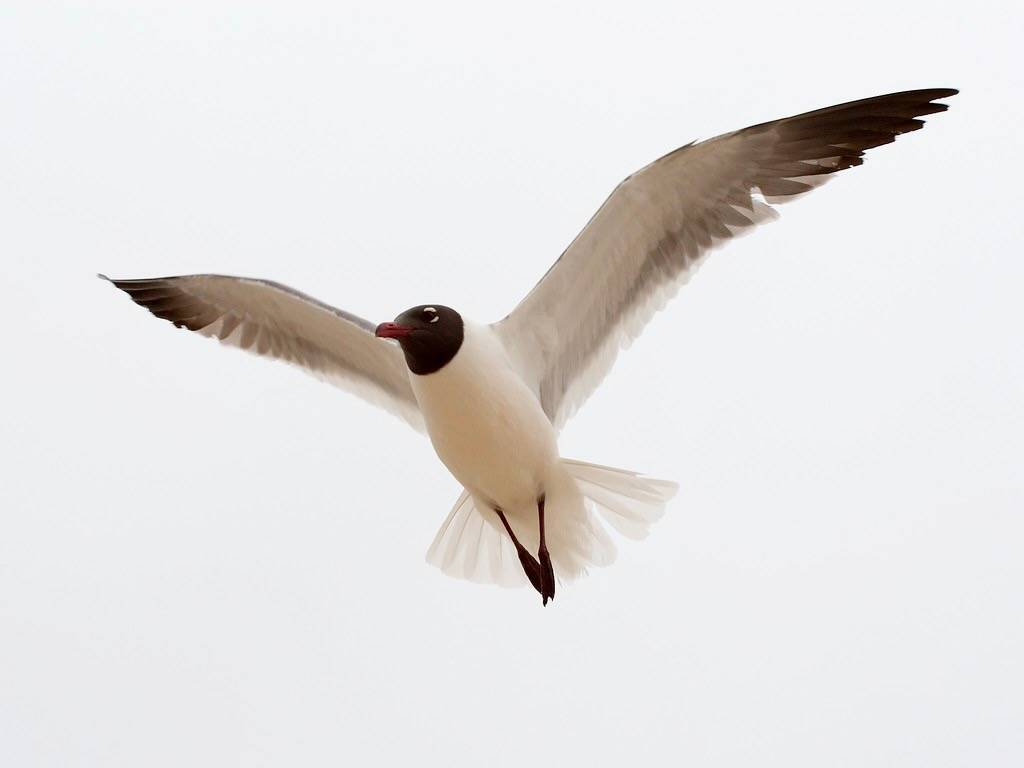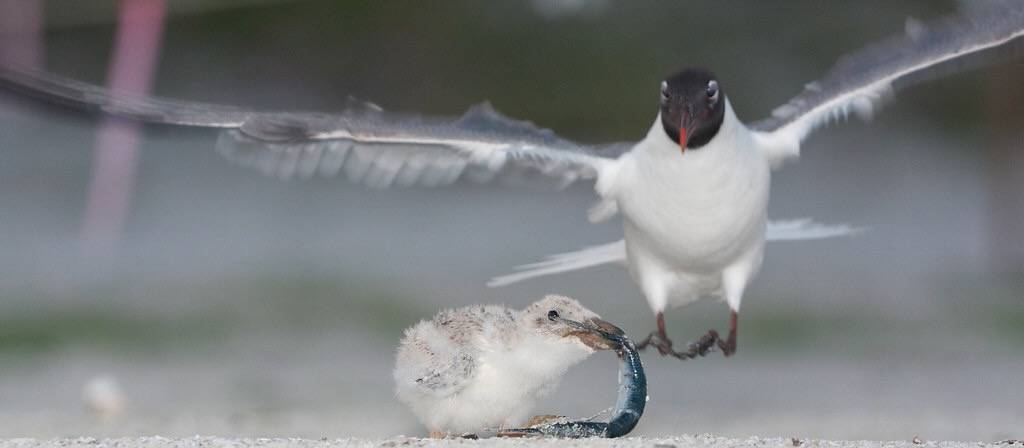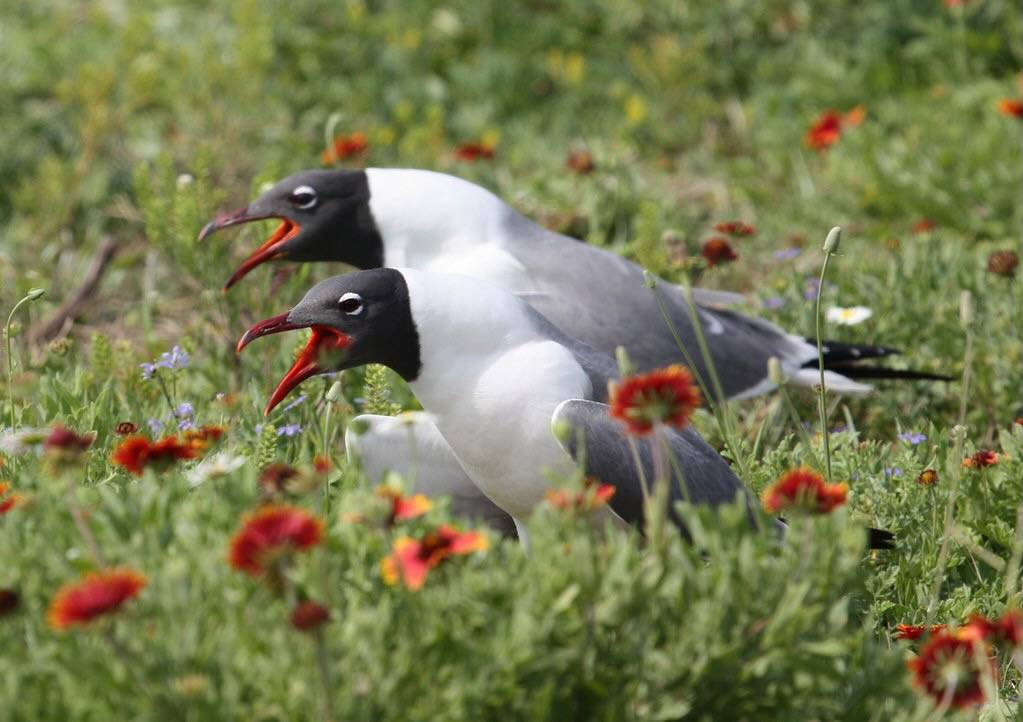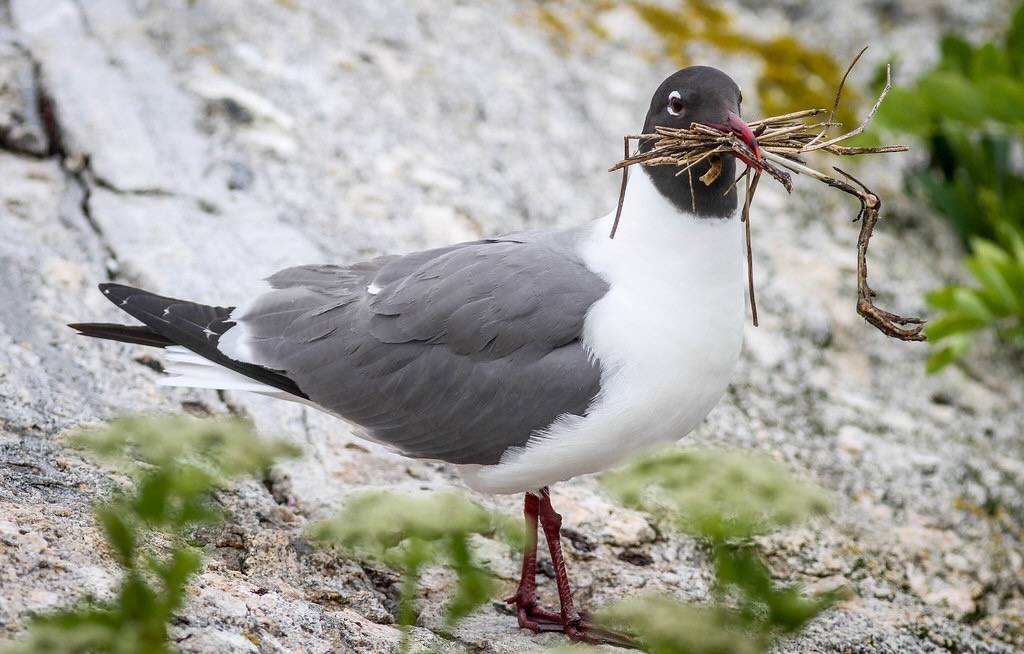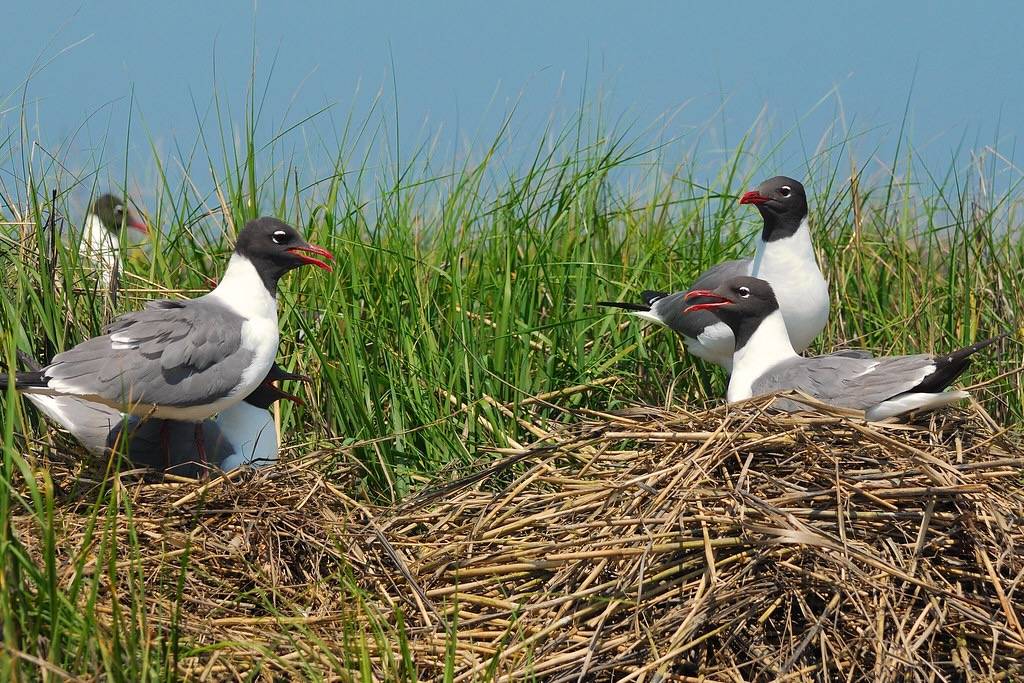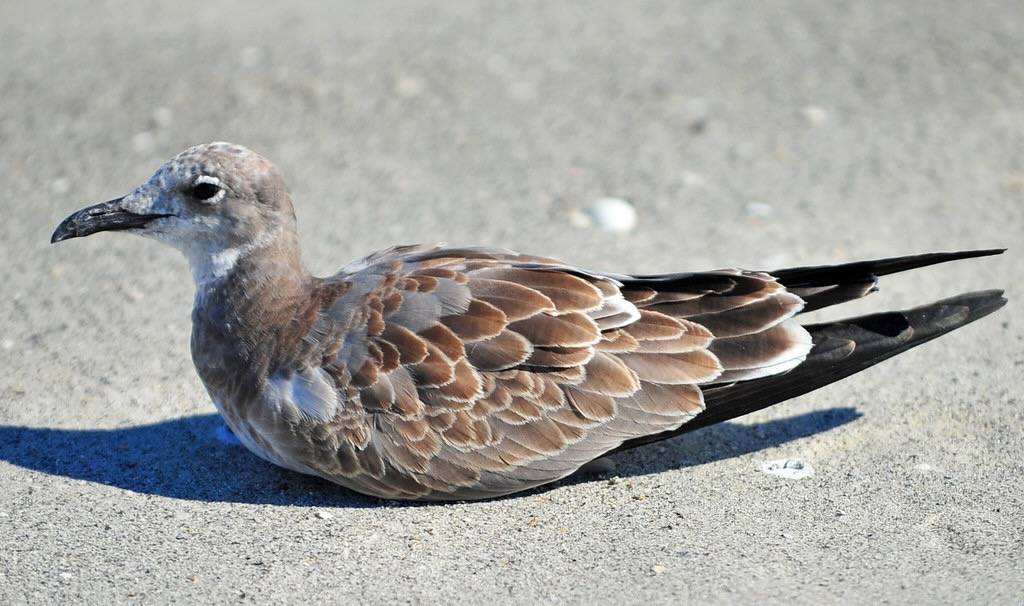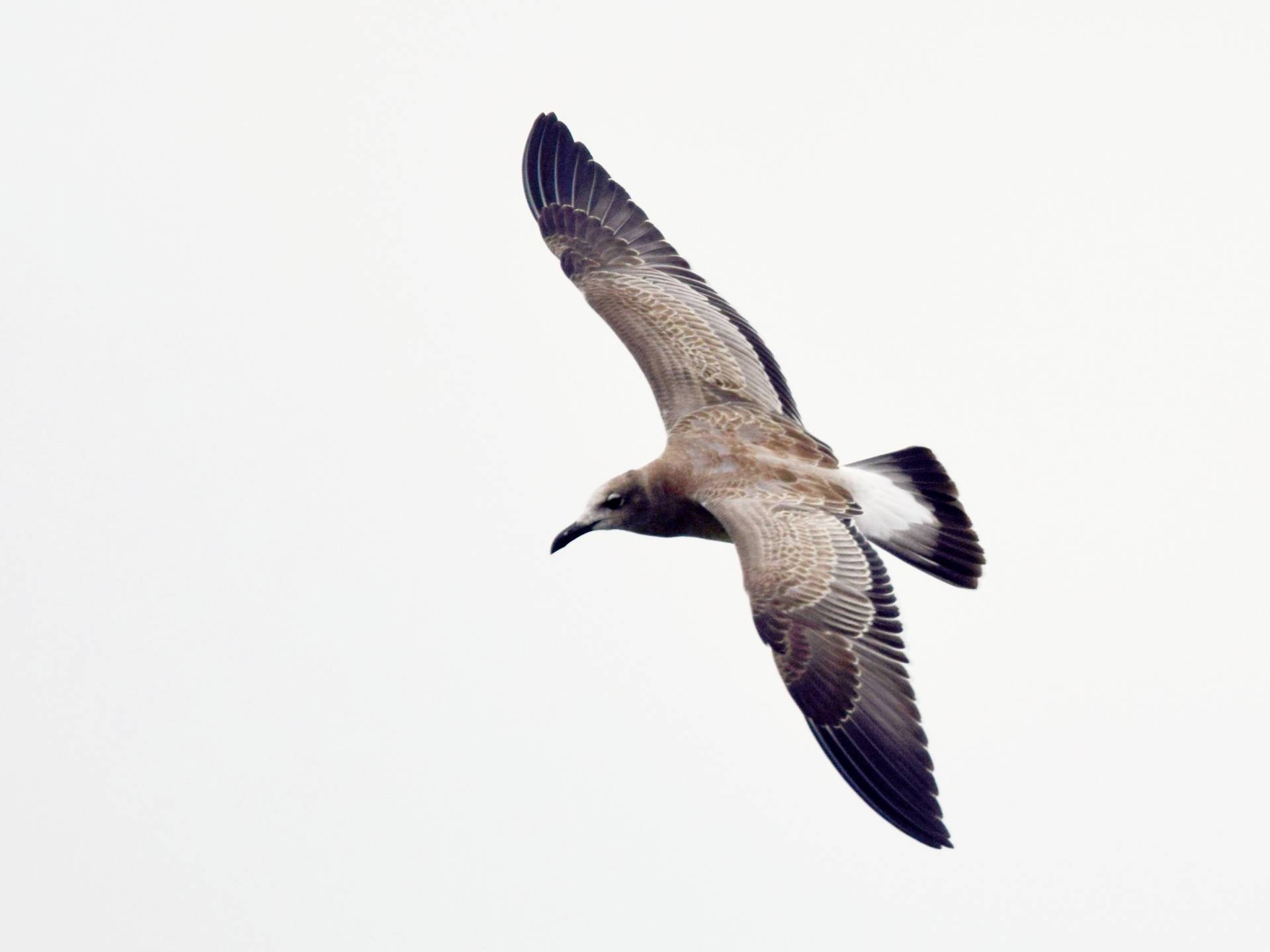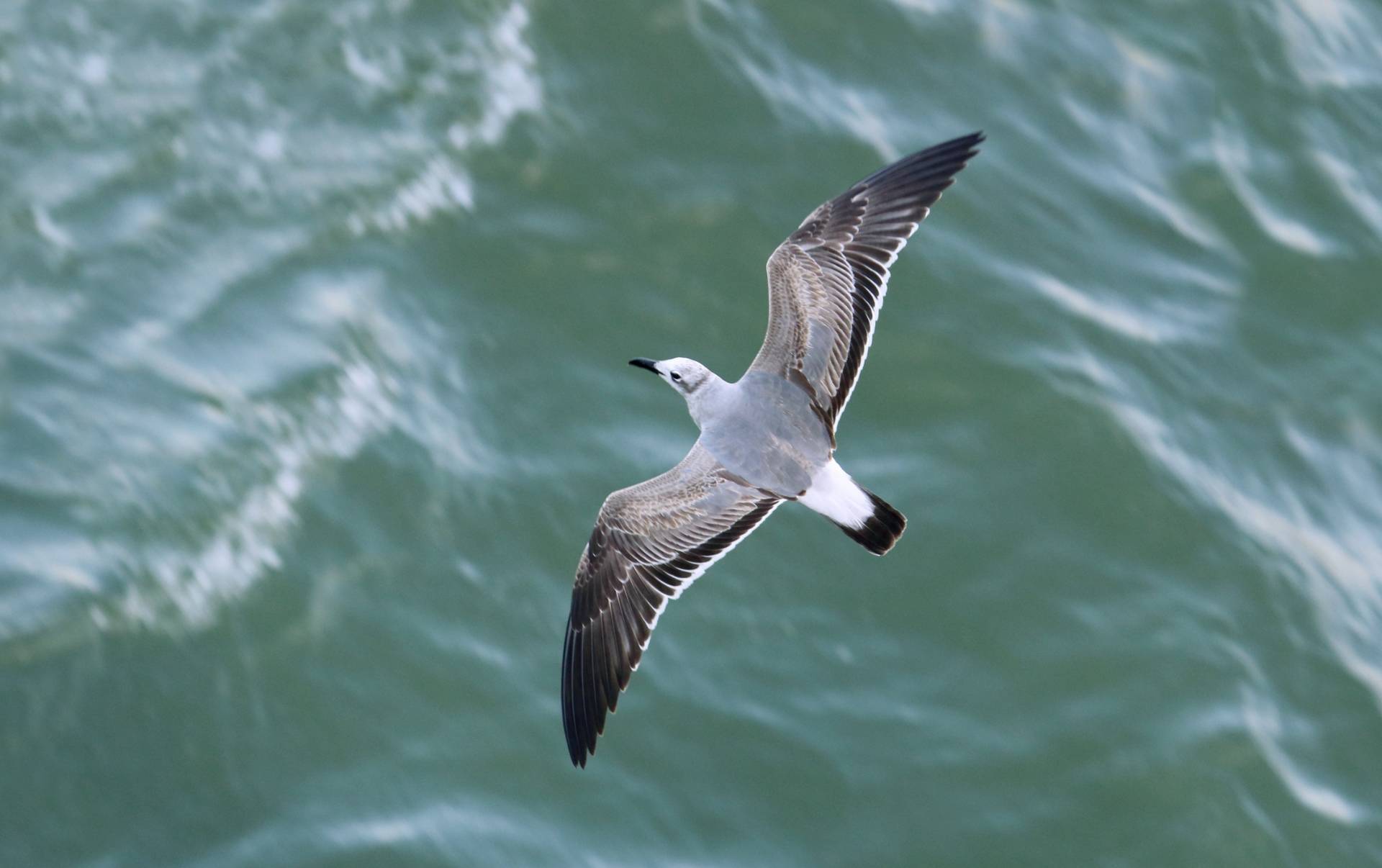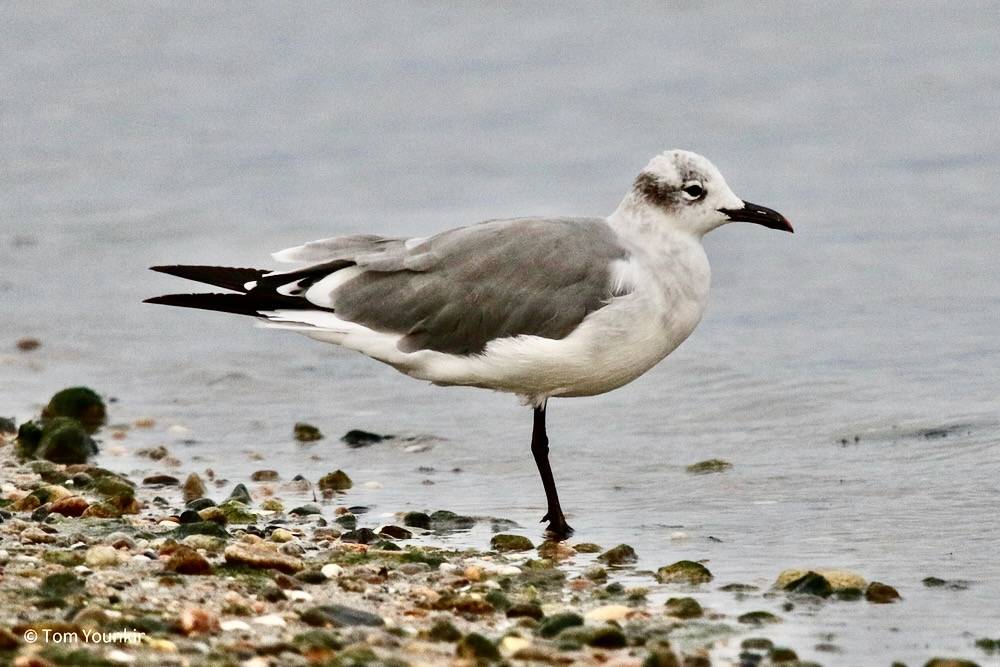Laughing Gull
The Laughing Gull has been recorded very month of the year at Salter Grove but its numbers are especially notable during August through November. Roving flocks of hundreds of migrants can be seen from the causeway as they hover over schooling bait fish, practically flying into each other. As soon as the fish move away from the area of the park, the masses of birds dwindle to only a few individuals.
The black hood, white crescent above and below the eye, dark red beak and legs would readily distinguish a breeding Laughing Gull from the other gull species in the park. However, it usually arrives in nonbreeding plumage. The black hood is replaced by white mottled with gray, and the bill and legs become black. So while gull-watching, it is helpful to remember that in contrast, the Ring-billed Gull has yellow legs and the larger Herring Gull has dull pink legs.
Preferred nesting habitats include sandy beaches, salt marshes and rocky islands along the Atlantic and Gulf coasts of North America. Colonies can contain as many as 25,000 pairs of nesting birds. Northern populations move south during the colder months whereas southern populations stay put year round.
Breeding success is high where the larger and predacious Herring Gull or Great Black-backed Gull are absent because they prey on eggs and chicks. But given the chance, the Laughing Gull is not above stealing eggs and chicks from Laughing Gulls nesting nearby.
Like many other seabirds, its populations declined in the late 19th century when its eggs and feathers were collected for commerce. However, once the Migratory Bird Treaty Act of 1918 was in place, numbers rebounded quickly because of its ability to forage and thrive in human-modified environments.
The Laughing Gull is no stranger to agricultural fields, garbage dumps, landfills, parking lots, picnic grounds, and anywhere else it can find foods discarded by humans. Its readiness to nest near coastal runways has posed a danger to air traffic control.

